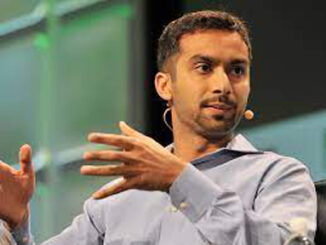
The twin themes of ‘Viksit Bharat’ and ‘Bharat – Loktantra Ki Matruka’ reflected throughout in this year’s parade which witnessed the participation of 13,000 special guests
NEW DELHI (TIP): Despite the cold and thick layer of fog covering the national capital, lakhs of people reached the Kartavya Path as President Droupadi Murmu led the processions of India’s 75th Republic Day.
A show of culture, diversity, military strength, women empowerment, and above all a show of ‘Viksit Bharat’ (developed India) and ‘Bharat – Loktantra ki Matruka,’ (India – mother of democracy) this diamond jubilee for India was led by the accomplished women of the nation.
The celebrations took place in New Delhi, with French President Emmanuel Macron as the Chief Guest.
The cultural vibrance of India was on full display this year, with over 13,000 special guest – an initiative which provided an opportunity to people from all walks of life to take part in the celebrations and encourage ‘jan bhagidari’ (people’s participation).
ALSO READ
Republic Day parade to be women-centric, showcasing India as ‘mother of democracy’
Throughout the parade, 13,000 women reached the centre stage in a display of national strength and vibrance.
For the first time ever, the parade was heralded by over 100 women artists who played Indian musical instruments. The parade commenced with the music of Sankh, Naadswaram, Nagada, etc. which was played by women artists.
It also witnessed the maiden participation of an all-women Tri-Service contingent marching down the Kartavya Path. Women pilots also enthralled the audience during the Fly-past, representing nari shakti (women’s power). The contingents of the Central Armed Police Forces also consisted of only women personnel.
The parade began at 10.30 a.m., when Prime Minister Narendra Modi visited the National War Memorial, where he paid solemn tributes to the fallen heroes by laying a wreath.
The President of India and her French counterpart were escorted by the President’s bodyguard – ‘Rashtrapati ke angrakshak’ which is the senior most Regiment of the Indian Army. This elite Regiment as the ‘angrakshak’ (bodyguard) have completed 250 years of service since its raising in 1773. The two Presidents arrived in the traditional buggy, the practice which is making a comeback after a gap of 40 years.
As people patiently waited for the sun to shine, India’s National Flag was unfurled by Major Saumya Shukla ASC, which was followed by the National Anthem with a booming 21-gun salute given with indigenous gun system 105-mm Indian Field Guns. Four Mi-17 IV helicopters of 105 Helicopter Unit showered flower petals on the audience present at Kartavya Path.
The parade then commenced with the President, who took the salute. The parade was commanded by Parade Commander, Lieutenant General Bhavnish Kumar, General Officer Commanding, Delhi Area, a second-generation Army officer. Major General Sumit Mehta, Chief of Staff, HQ Delhi Area was the Parade Second-in-Command.
The highest gallantry awards this year included Param Vir Chakra winners — Subedar Major (Honorary Captain), Yogendra Singh Yadav (retd.) and Subedar Major Sanjay Kumar (retd.), and Ashok Chakra winners Major General CA Pithawalla (retd.), Colonel D. Sreeram Kumar and Lt. Col. Jas Ram Singh (retd.).
The Param Vir Chakra is awarded for the most conspicuous act of bravery and self-sacrifice in the face of the enemy, while the Ashok Chakra is awarded for similar acts of valor and self-sacrifice but, other than, in the face of the enemy.
For the first time ever, the French Air and space force joined the fly past over Kartavya Path with two French Rafales and one A330 MRTT. France is the first foreign country to join the fly past, similarly the French regiment was the first one to have marching contingent at the parade in 2016.
The Air Force tableau showcased the idea of atma nirbharta (self-reliance), which depicted IAF C-295 transport aircraft being flown by two women aircrew.
For the first time, Delhi police had its all women contingent participating in the parade. Over 15 State tableau and 8 Ministry, defense and other departments tableaus, all decorated also made their presence known.
While Meghalaya and Council of Scientific and Industrial Research’s tableaus brought in rich flowery visuals of cherry blossoms and lilacs respectively, the Arunachal Pradesh tableau was focused on its “bugun community reserve” a biodiversity hotspot in the State.
All tableaus put women in the front and centre of the show including the Indian Space Research Organisation which highlighted the landing of Chandrayan-3 and the women scientists who contributed to it.
Among the grand showcase of mechanized columns and missile systems, were the march-past by marching contingents — the Madras Regiment, The Grenadiers, the Rajputana Rifles, the Sikh Regiment, and the Kumaon Regiment. To showcase the spirit of nari shakti, around 1,500 female dancers performed on 30 folk dances, including Kuchipudi, Kathak, Bharatnatyam, Satriya, Mohiniyattam, Manipuri and more. Out of 1,500, 199 were tribal dancers, 486 were folk artists, 399 dancers were trained in classical, and 56 were Bollywood.
The parade ended with the fly-past in the sky, with different formations like — Arjan, Netra, Varuna, Bheem, Trishul and Vijay — which was formed by Rafale.





Be the first to comment